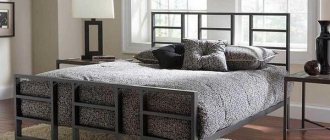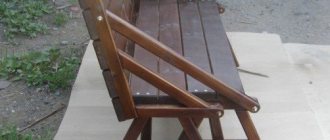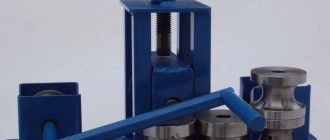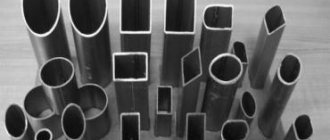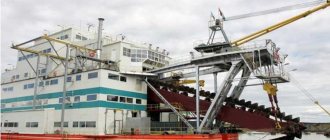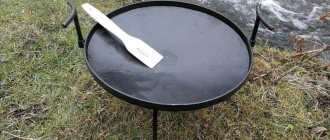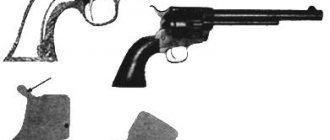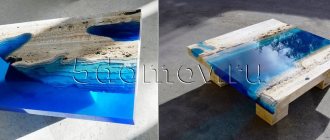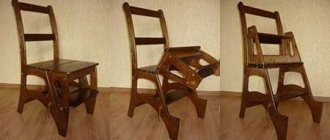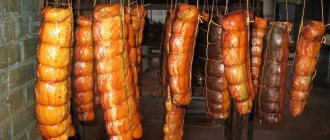The cross is a symbol of faith; it reminds people of the death and ascension of Jesus Christ, the forgiveness that was provided to repentant sinners. The installation of a cross at the burial of an Orthodox person is mandatory. You can order it from a workshop or make it yourself. Heavy wooden or metal crucifixes are placed on a foundation. It is worth learning about how and what to make a wooden grave cross, where to put it after installing the tombstone, in more detail.
For whom a cemetery cross is installed. What an Orthodox cross looks like in a cemetery. Photo
It is not always possible to see crucifixes on the territory of the churchyard. This is due to the fact that such a religious attribute is established only after the funeral of believers. Atheists, suicides, agnostics, the unbaptized, and atheists do not belong to this category. There are no exceptions to this rule, unless relatives keep silent about the religion of the deceased. But in this case, the cross on the grave will not help you get closer to the Kingdom of God when the time comes. On the contrary, installing it fraudulently can have consequences: those of the deceased’s relatives who decided to do this will share the sin of the deceased without faith.
There are many types of crucifixes. After the death of Orthodox Christians in Russia, the eight-pointed version is most often installed. For comparison, the six-pointed variety is generally accepted among Belarusians. But both options are interchangeable, because they are Orthodox. The eight-pointed type has another crossbar at the top. This is a symbol of a tablet on which in ancient times it was customary to write the status and guilt of a crucified person.
A four-pointed cross can also be found on a grave - this is the earliest version. Initially used in the Armenian church, where for the first time in world history Christianity was recognized as the state religion (4th century AD).
There is also an option with a roof. It covers the upper part of the structure, usually has a small width, i.e. it is not intended to protect people from precipitation, but only fulfills its function - it symbolizes the house of the deceased.
The cross is a traditional symbol of Christianity
Is it necessary to consecrate a pectoral cross in church or is it enough to sprinkle it with holy water at home?
Icons and images of the cross are subject to consecration by a priest. There is a special short sequence in the breviary, which contains a priestly prayer for the consecration of “this sign of the cross.” (The Breviary is a liturgical book concerning private services performed on REQUIREMENT (as opposed to public services - Vespers, Matins and Liturgy).
I’ll tell you an incident that happened to a parishioner of our Temple. Before this, she and her husband recently got married. My husband just came to faith. We bought a pectoral cross. The husband thought: “Why should I go to the Temple. There is baptismal water and prayer for the consecration of every thing.” I read it and sprinkled it three times. Put it on and wear it. We went to the Pafnutievo-Borovsky Monastery (for the first time). They enter Fr.'s cell. Blasius. He calls him by name (seeing him for the first time) and says: “Your Cross has not been consecrated, go to the prayer service and consecrate it.” (Zakharin A. G.)
The tradition of installing a crucifix. Its meaning on the grave
When a raised platform is formed on the grave, this not only helps prevent subsidence of the ground after the funeral, but also symbolizes Golgotha, where Jesus was crucified. However, the tradition of installing the cross did not appear immediately after the great event - the resurrection of the Son of God. The approximate time of its origin is after the Baptism of Rus'. The first crucifixions were different from the current ones. In the V-VI centuries. Jesus was depicted after the resurrection - he was in a dress. Later, closer to the 10th century, the external signs of the Savior changed: wounds, blood, and a crown of thorns appeared.
The general meaning of the cross on the grave is joining the Orthodox faith, striving for God. But the symbolism can be different, depending on where this ritual attribute is installed:
- at the head of the head - a sign of victory over the Devil; when the time comes, the crucifix will become a banner;
- in the legs: means support, eternal life, when the Last Judgment comes, the dead will rise from their graves, it is believed that it will be more convenient for them to rise (holding on to a reliable structure).
Orthodox cross at the head of the grave
Arrangement of the grave according to Orthodox canons
The cemetery cross must always be present at the grave of the deceased. But it is permissible to choose any of the options:
- standing separately;
- combined with a tombstone;
- in the form of an engraving on the monument.
Engraving on a monument is too weak a symbol of belief; this method is usually used by the relatives of a deceased suicide in order to bring the deceased at least a little closer to the shrine. To arrange the grave of a believer, it is better to choose a free-standing cross or combined with a tombstone.
Religious attributes are placed on the grave immediately after burial. For this, a wooden product is used, since it is distinguished by its low weight - the object will not press through loose soil. But it is customary to change it to a more reliable option, only later. They put up a large, heavy tombstone. Due to this, the product looks monumental.
It is recommended to replace it no earlier than after 1 year. This is the most correct option, because by that time the soil will be completely compacted, and the condition of the cemetery plot can be assessed. If you dismantle the wooden cross earlier and then start installing a heavy tombstone, the soil will quickly subside and the monument will sag. At the same time, they are considering the option of installing a flower bed, a table, or a table. It is important to fence the area with a low fence.
Decorative elements
A wooden cross is made from beams. At the joints, grooves are cut into them. In this way, the planks are placed on top of each other and secured with glue and furniture nails. Master carvers can cut out initial letters along the edges of the crossbars, apply a vignette or other decorative ornament. The images of a grapevine, corresponding to the event when Jesus turned five jugs of water into five jugs of wine, and a shamrock, a symbol of the Trinity, are considered quite popular.
A design solution can be created by carving wood, burning it, or simply applying durable enamel paint. Next, the ritual item is opened with waterproof varnish or wax mastic. This protection prevents moisture from penetrating and damaging the tombstone.
Parameters of the Orthodox cross on the grave
Religious trappings may appear to be made on a whim. But in fact, these are designs that are thought out to the smallest detail. You can consider, for example, a cross on a grave. It will become obvious that all proportions are met. The product will look perfect - there will be no discomfort when looking at it. You can get this result if you strictly follow the production rules.
Divine section
At all times, the cross on the grave looked beautiful and harmonious. The secret to obtaining such a result is following the rule of the divine cut. In this case, the proportions of the Orthodox cross are taken into account. The Divine Section is determined using the values:
F-2 = 0.382;
F-3 = 0.236;
F-4 = 0.146.
Here F is a designation given in honor of Phidias, the sculptor who first used this method of production.
If we take the height of the cross as a basis, equal to 1.618 m, then many parameters will correspond to the value of 0.382: the length of the upper crossbar, the distance from the lower crosshair to the upper and lower points of the oblique bar, as well as the distance from the upper point of the cross to the center line of the middle crossbar.
Standard cross sizes
There are no strict restrictions when making a ritual attribute. The crucifix most often has a height from 400 to 1200 mm. But it is also permissible to use an option that corresponds to human height. You can also choose standard varieties:
- 700x400x50 mm;
- 1200x600x80 mm.
You can do either of them, in both cases it will be correct. When making it yourself, the divine section is not always taken as a basis. As a result, when consecrating a crucifix, the clergyman may note imperfect proportions.
The meaning of the oblique crossbar
Particular attention is paid to the lower part - the crossbar, located at an angle. This is a footstool for Christ. Today it can be seen on crucifixes, beveled, which means “the measure of righteousness.” Symbolizes the mental state of a person who can rush from righteous to sinful behavior.
Table: materials for making a cross, pros and cons
Design and shape are not the only parameters that are paid attention to. It is necessary to take into account the properties of the product, which means determining the appropriate type of material. To do this, it is recommended to carry out a simple data analysis:
| Type of material | Advantages | Flaws |
| Tree | light weight; attractive structure of the material - natural pattern formed by fibers; ease of manufacture and installation. | exposure to water; short service life; low resistance to insects and microorganisms. |
| Metal | high strength; resistance to external factors; average service life. | the need for processing to avoid rusting; expensive equipment is required; experience is needed to perform welding work. |
| Stone | high strength; attractive appearance; reliability, long service life; the ability to create complex compositions, statues, monuments. | difficulty in processing in the absence of experience; some types of stone (marble) are susceptible to moisture; heavy weight, it is impossible to carry the product yourself. |
Various materials have a number of operating features and properties that affect the quality of processing and application.
Before making a choice, you need to compare different types of wood, metal and stone.
Wooden cross
A crucifix is made in the simplest form. This is due to the fact that even those who have not had such experience can work with the material. But it is possible to make more complex ritual attributes - carved ones. They can have different shapes, which are given using tools for carving and firing.
Wooden crosses
Types of wood
Considering that natural material is susceptible to moisture, it is necessary to increase its service life by all means. For this purpose, wood with special properties is selected. Some breeds are more resistant to water:
- oak;
- beech;
- larch;
- pine;
- teak;
- Iroko.
The most affordable option is coniferous wood. Teak and iroko are elite varieties of wood. Oak is a middle option between the above and is highly durable. Larch can remain in water for a long time without changing shape or losing properties.
How to protect the cross
You can further improve the characteristics of a wooden cross. For this, various compositions are used:
- antiseptic;
- hydrophobic;
- primers;
- paint and varnish.
It is necessary to protect the tree from the effects of fungi, mold, and microorganisms. Antiseptic liquids are used for this. Hydrophobic materials increase the wood's resistance to water. The primer improves the quality of the finishing coat due to improved adhesion.
Paint and varnish materials make the structure attractive and also further increase resistance to moisture, but they require constant updating.
Metal cross
In terms of external qualities it is inferior to most types: wooden, stone. But some types of metal structures still have decent characteristics. But, regardless of the type, the material requires strong fastening - the welding method is used.
Metal cross on the grave
Welded
Individual elements are made: from profile pipes, corners, sheet metal. First, a cross is created, then decorative elements are added. This option has disadvantages:
- high risk of metal rusting in areas where welds are located;
- low level of attractiveness, even after cleaning the seams, unevenness remains, traces of joining parts are visible.
Forged
Made from metal, the result is a cross with excellent external properties. This is due to the use of forged structural elements. This crucifix has a high level of strength. But forging is often combined with welding.
Stone cross
If you need to preserve the appearance of the deceased over the centuries, you should definitely choose a stone for making a tombstone. But the properties of different types of materials differ, some last longer than others, and are more attractive.
Stone structures are difficult to make with your own hands if you don’t have experience. In this case, you need to be able to work with a special tool, an array of materials.
Orthodox stone cross on the grave
Granite
Natural stone, like its synthetic counterpart (porcelain stoneware), is characterized by a high level of strength. Due to this, it is possible to preserve the product for centuries. There are different types of it: with green, brown, red, gray and black undertones. Images and inscriptions, like polishing, will be preserved for a long time. In addition, the material is completely moisture resistant.
Marble
Almost as durable as granite, but still slightly more susceptible to mechanical stress. Marble is also inferior in some other parameters: moisture resistance, acid resistance. But products made from such material are attractive, and there are options in different shades.
Choosing wood
If you are faced with the need to arrange the final shelter for a loved one, you probably want the result of the work to look decent. Many workshops specializing in this offer the manufacture of wooden crosses for graves. Wood looks noble, however, when choosing this material for the manufacture of elements and structures located in the open air, one should take into account its special characteristics.
Only aspen is not afraid of water and does not rot. However, this breed is not used for making Christian paraphernalia, as it is considered cursed. It was on an aspen tree that Judas hanged himself, and therefore the tree does not have the best reputation in the Orthodox world. Oak is considered one of the most durable species; over the years it becomes stronger and acquires a noble dark shade. Products made from beech, teak, and ash can last approximately 30 years. If you wish, it is not at all difficult to find a wooden cross for a grave made of pine; its undeniable advantage is its low cost, but it will also lose its attractive appearance much faster than its more expensive analogues.
Classification of religious crosses
When you plan to install a cross on a grave, choose an option according to the religion of the deceased. Ritual attributes may have external similarities, but different purposes.
Orthodox
For modern people, the eight-pointed version is the most familiar. But this does not mean that the four- and six-pointed view is unacceptable. On the contrary, there are options of various forms and purposes:
- eight-pointed papal - used in the Middle Ages, distinguished by the presence of two horizontal crossbars instead of one;
- six-pointed patriarchal - an improved version of the four-pointed one.
Orthodox and Catholic crosses
Catholic
Believers representing this denomination often erect a four-pointed cross on the graves of the dead. Moreover, the most common are the simplest tombstones. They look like a straight cross without decorative elements. Less commonly used are six-pointed structures, which have a crossbar on one side.
Armenian
Initially, the standard four-pointed version was used. But later its appearance improved somewhat. Now in Armenian cemeteries you often see crosses with decorative elements at the ends of the ritual attribute; one of the design options is forked edges. This is a symbol of flowering, sprouted branches.
Armenian cross made of stone
Byzantine
The cross was named after the place of its appearance and use - in the Byzantine Empire. Moreover, this definition is also used for the Russian crucifixion. Thus, the traditional Orthodox eight-pointed cross is called Russian-Byzantine. These options differ in appearance. The original Byzantine version is a more decorative product. There are a large number of forms. But almost all of them are four-pointed.
Byzantine cross
Choosing the location of protective embroidery
- Circular - they are also traditional, embroidered on the sleeves, collar, hem, and belt.
- All the rest are non-traditional and perform various protection functions:
- protecting the baby from troubles - the silhouette of a rooster or horse, embroidered with black or red thread; for older children, for example, schoolchildren - a violet-blue color scheme that protects against mental fatigue;
- protection of the sphere of relationships (love) - cross-shaped and circular patterns embroidered with orange-red threads;
- successful business management in any field of activity - golden-green or blue embroidery.
How to make, paint and install a wooden cross with your own hands. Drawings download for free
To make a wooden cross, you need to create a drawing. It is better not to make ritual attributes at your own discretion; you can download a ready-made diagram, since it is important to maintain the ratio of the side lengths. First, it is proposed to make a simple cross; for this, bars are cut and processed. Before installation, the product is coated with protective compounds. Place the cross in the hole. Clay is used to backfill it, because it does not wash out, does not sag over time, and is highly dense. But the hole in the ground is first filled with stones to increase the reliability of fixation of the installed structure.
Drawing for making an Orthodox wooden cross
Cross made of corrugated pipe: how to make it, how to protect it, installation features
To make the crucifix more durable, most often they consider the option of a square or rectangular profile. But sometimes round pipes are also used. It is enough to prepare the material: 25x25 cm, 25x40 cm, 40 cm. The size of the cross on the grave can be standard, corresponding to the golden ratio. First you need to download the finished scheme. But all structural elements will have to be welded. The seams are cleaned and the product is coated with a primer. The lower part is treated with liquid bitumen, the rest of the surface is painted. There are several options to consider for installation:
- backfilling with soil;
- compaction with stones, filling the cross from a corrugated pipe with cement mortar;
- pouring concrete over the reinforcement frame installed in the pit.
Drawing of an Orthodox cross from a profile pipe
Method 2 – character fonts
The most common way is to use special fonts - “Wingdings 2” or “Webdings” . You can find them in your document in the left corner and select the appropriate font.
After selecting any selected Wingdings 2 or Webdings font, you can use special hotkeys, which are shown in the picture below.
“Question-answer” section
Why is the cross askew, can it be corrected?
Expert opinion
Klochkov Andrey
Employee of the improvement department of the municipal unitary enterprise "Clean City"
There are various superstitions among people, but when changing the position of the cross on a grave, only one factor needs to be taken into account - a change in the properties of the soil. When the crucifix was installed improperly, sealing materials were not used, or the ritual attribute turned out to be too large or heavy, the soil will sag more intensely. As a result, the crucifix is askew, but it is not prohibited to correct it, since a deviation from the vertical of several centimeters is very noticeable.
Is it possible to leave a cross on a grave with a monument?
Expert opinion
Klochkov Andrey
Employee of the improvement department of the municipal unitary enterprise "Clean City"
According to modern tradition, the cross installed after the funeral is dismantled. But Orthodox canons even earlier required the placement of a new tombstone without removing the crucifix. Moreover, it is permissible to choose any of the options: the monument was placed at the feet or at the head of the deceased. Then in the first case it was located next to the cross, and in the second - opposite.
On the grave there is a cross with a monument
Why are roofs built on crosses?
Expert opinion
Klochkov Andrey
Employee of the improvement department of the municipal unitary enterprise "Clean City"
The structures were called “cabbage rolls” and had a mystical meaning - associated with the habitat of spirits. In addition, such a structure was popularly considered a house for the deceased, and it also protected icons, which were previously attached to wooden crosses, from precipitation. But recently, such structures have ceased to be used - they were banned by the church as a manifestation of paganism.
Is it possible to attach a photograph of the deceased to a cross?
Expert opinion
Klochkov Andrey
Employee of the improvement department of the municipal unitary enterprise "Clean City"
It is permissible to place a tablet on a crucifix with the information of the deceased. But it’s better to put the photo at the base. This is due to the fact that during prayer a substitution of values occurs - the deceased is raised to the level of Christ, since his face is located in the same place as the crucifix. Such an appeal to God can have a negative meaning - a person concentrates on worldly things, elevates earthly things above the Lord, and this is a sin.
Cross on a monument: which side is it placed on?
Expert opinion
Klochkov Andrey
Employee of the improvement department of the municipal unitary enterprise "Clean City"
An engraving or protruding decorative element can be placed where the composition requires it. This is what many people think today. However, the priests say that the ritual attribute should be on the right, because on this side is God, and on the left is the Devil. However, when looking at the monument, in this case the image will still appear on the opposite side, since the viewer is opposite. Others advise paying attention to the height of the engraving - the crucifix is applied to the surface of the structure higher than other elements.
Four-pointed Catholic cross on the grave
What are the dimensions of a metal grave cross?
Expert opinion
Klochkov Andrey
Employee of the improvement department of the municipal unitary enterprise "Clean City"
The dimensions of ritual attributes are standard: the same as for wooden and stone products. But there are some recommendations that will help you navigate when determining the lengths of the sides: side planks - 1/3 of the height, lower part - 2/3 of the entire structure, lower inclined plank - at an angle of 45°.
What to do with the cross after installing the monument?
Expert opinion
Klochkov Andrey
Employee of the improvement department of the municipal unitary enterprise "Clean City"
You cannot throw it into a landfill, as this will be considered trampling on the shrine. It is better to burn the wooden crucifix. An alternative is the dismantling option - the crucifix is dismantled into pieces and then buried at the base of the grave. The photo of the deceased left after the funeral is burned.
Preparation of gypsum solution
Since G16 architectural gypsum was used to cast the cross, no additives are required to improve its properties - it is already quite strong.
The ratio of the volume of water to the amount (weight) of gypsum should be equal to 0.44. Pour gypsum into water in small portions. At the end, you need to wait until it absorbs the water itself, and then you can completely mix the mixture.
To ensure that the gypsum solution does not harden longer and is more fluid (this is necessary for better filling of small mold elements), it is advisable to add 0.05% plasticizer to the solution, as was previously done when working with gypsum.
In order for the casting surface to be free of cavities, the mixture must be slightly vibrated, then most of the air bubbles will come out of the solution. If the shells still remain, they can be puttied with the same gypsum solution.
After an hour, the casting is ready and can be removed from the mold with further trimming and leveling if necessary.
Silicone does not stick to plaster, so recessing should not be difficult.
